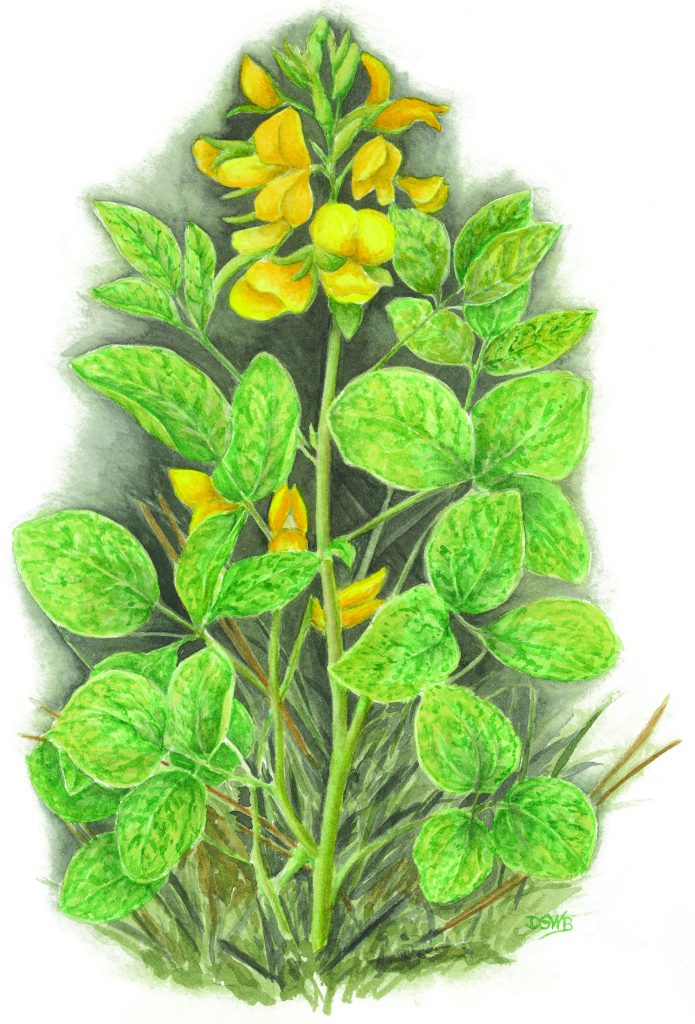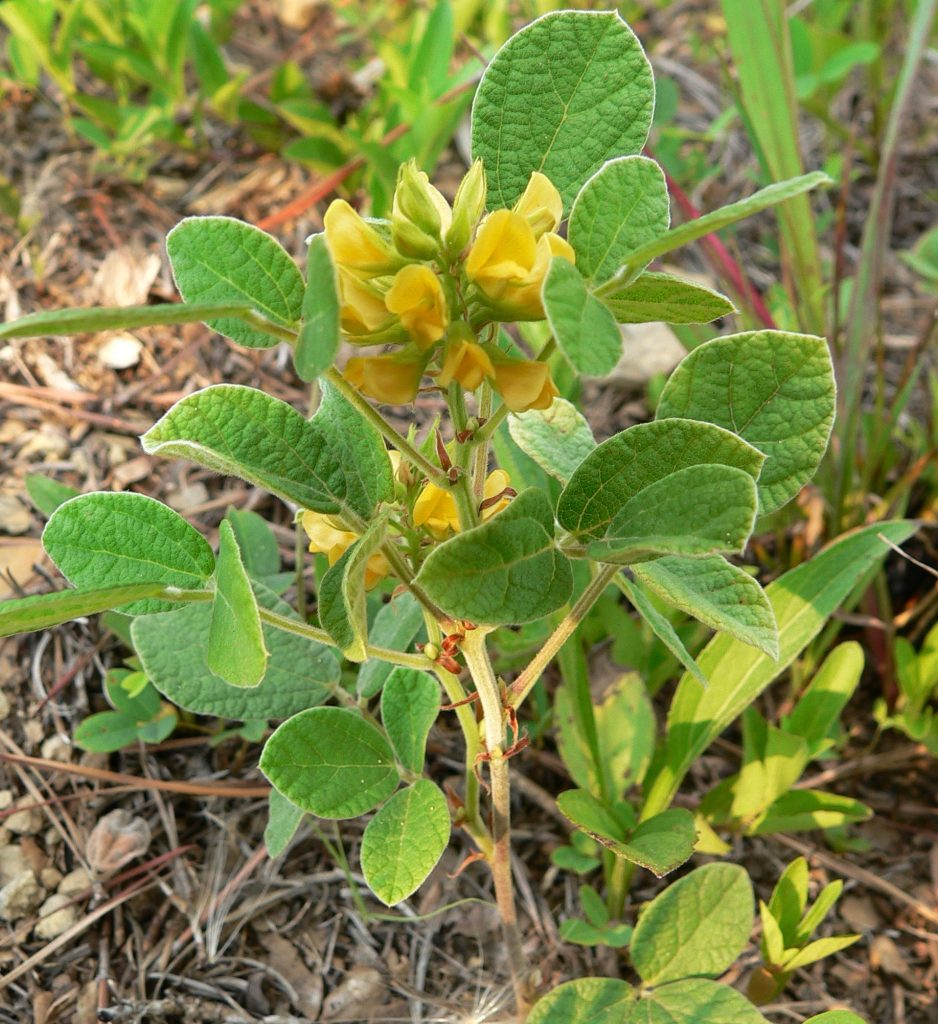Erect snoutbean
Rhynchosia tomentosa
We are excited to announce this year’s North Carolina Wildflower of the Year, erect snoutbean (Rhynchosia tomentosa). It has been nearly 15 years since we’ve featured a member of the legume family (Fabaceae) as the Wildflower of the Year, but legume species are very important ecologically and economically. Legumes are the second largest family of flowering plants, provide nutrient-rich food for humans and animals, and are vital to pollinators and ecosystem health. That’s why we think this year’s selection will be a great addition to your landscape.
This common but little-known species is found across the southeastern United States and is fairly widespread in North Carolina from the Piedmont to the Coastal Plain, but is less common in the mountains. It thrives in dry, sandy soils and grows in longleaf pine sandhills, open woodlands, and forest edges. This fun little plant produces clusters of small, yellow papilionaceous (“butterfly-shaped”) flowers in May through August. These flowers are pollinated by bees and are located in the leaf axils or at the tops of the stems, which can grow up to one foot tall. Its trifoliate leaves are covered in fine hairs, giving the plant a velvety texture and appearance. Erect snoutbean is appropriately named for the small downward pointing beak or “snout” on the end of the seed pod.
Perhaps one of the neatest things about erect snoutbean is its ability to fix nitrogen. All plants need nitrogen to grow, however the amount of accessible nitrogen in the soil is often less than a plant needs. Like most species within the legume family, erect snoutbean has the amazing ability to produce its own usable nitrogen through a symbiotic relationship with bacteria found in nodules on its roots. These bacteria, called rhizobia, convert nitrogen that is found within air pockets in the soil into a form the plant can use. When these bacteria-containing root nodules decompose, additional nitrogen is released back into the soil.
Gardening with erect snoutbean
Erect snoutbean prefers open sunny sites with dry to average, well-drained soil. It will become spindly and produce fewer flowers in shade and will decline rapidly if planted in poorly-drained soils. Try it in a container! Given the right conditions, this species is a tough, drought-resistant perennial and will bloom even in the hottest and driest summer conditions, bringing a splash of color and pollinators to your garden.
Bring erect snoutbean home!
Want to try your hand at growing erect snoutbean from seed? You can pick up a free seed packet from our exhibit hall or send a self-addressed, stamped envelope to:
North Carolina Botanical Garden
UNC–Chapel Hill
Attn: NCWFOY 2024
CB 3375
Chapel Hill, NC 27599-3375
Note: We limit our seed distribution to a 12-state region of the Southeast, from the Mississippi River to the Atlantic Ocean and from the Gulf of Mexico north to Kentucky, West Virginia, Maryland and Delaware. If you live outside this area, we may be able to help you find sources of native seeds in your region.
About the NC Wildflower of the Year
The North Carolina Wildflower of the Year program is managed by the North Carolina Botanical Garden with some financial support from the Garden Club of North Carolina, Inc. Each year since 1982, a showy native perennial has been chosen and seeds of that wildflower are distributed to interested gardeners.
Read more about the Wildflower of the Year program

Illustration by Dot Wilbur-Brooks
Header photo by Richard and Teresa Ware
